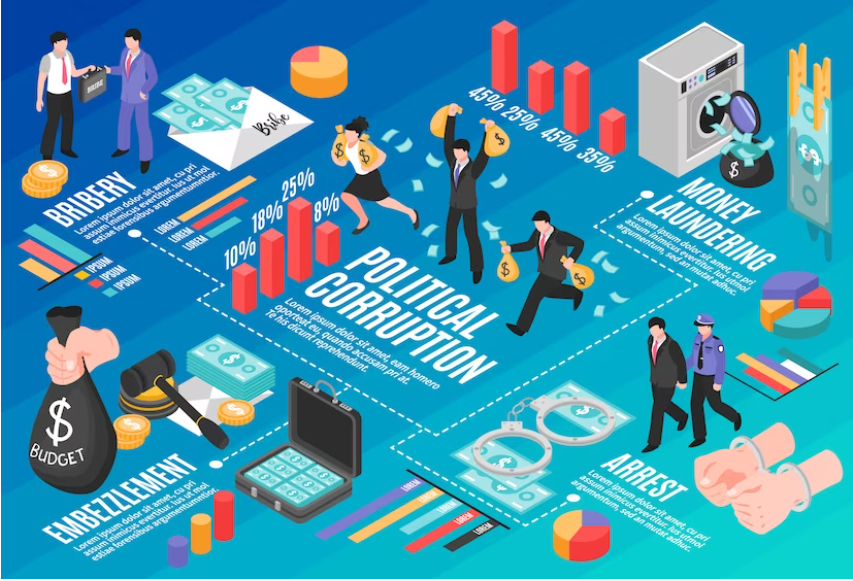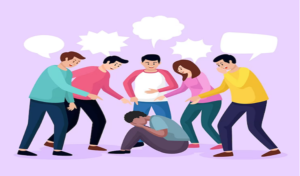Analyzing the effect of incarceration on crime rates

People often call the United States “the land of the free,” but it also has one of the biggest prison populations in the world. The United States has the highest rate of prison in the world, with more than 2.3 million people locked up. But the question still stands: Does putting crooks in jail really cut down on crime? In this blog, we will look at how prison affects the crime rate in the United States.
Over the years, the American justice system has gained a bad reputation for its “tough on crime” approach, where harsh sentences and long prison terms are seen as the answer to crime. But there is a lot of disagreement about how this method affects crime rates. Some people say that thieves need to be locked up to keep others from committing crimes and to keep them off the streets. Others say it’s a waste of money, doesn’t work, and just keeps the cycle of crime going.
But why does the US have so many people in jail? What will happen to crime rates, society, and the business as a result of this approach? And are there ways to reduce crime other than putting people in jail that might work better? We’ll look into these questions and more in depth in this blog. To keep things interesting, we’ll mix serious research with a bit of humour. So, let’s get started and look at the interesting and complicated link between the number of people in jail and the number of crimes in the US.
What is being locked up?
Incarceration is the legal process of putting someone in jail or prison as a punishment for breaking the law. In the United States, putting someone in jail is the most common way to punish them for a crime, and the prison system is an important part of the country’s law system.
The US jail system is complicated, and each state has its own rules. But there are mainly two kinds of facilities: federal and state. The Federal Bureau of Prisons is in charge of federal prisons, while separate state governments are in charge of state prisons. In addition to prisons, there are also county jails, centres for holding juveniles, and centres for holding people who are in the country illegally.
Even though prisons are an important part of the American justice system, the US jail system has a number of problems. Some of the most important problems are overcrowding, a lack of rehabilitation programmes, race and socioeconomic differences, and a high rate of people going back to prison. Because of these problems, many people are calling for changes to the criminal justice system. They want options to jail and more money spent on rehabilitation and education programmes.
Rates of crime in the U.S.
Crime rates in the US have been talked about and been a source of worry for a long time. Recent data show that the general crime rate in the United States has been going down since the 1990s. But crime rates change from place to place. Some cities and states have higher crime rates than others. Even violent crimes like murder, rape, and assault have gone down, but property crimes like burglary and stealing have stayed pretty much the same.
Crime rates in the USA have changed over time and followed different patterns. For example, in the 1980s, violent crime rates went up because of the crack outbreak. In the 1990s, tough-on-crime measures led to a rise in the number of people in prison, which some people say led to a drop in crime rates. But some people say that the drop in crime rates can be explained by other things, like the fact that the population is getting older.
Property crimes like theft and vandalism, as well as violent crimes like attack and murder, are common in the United States. In the past few years, cybercrime has also become more common. Millions of Americans have been affected by identity theft and data hacks. For successful crime control strategies, it’s important to know the current crime rates, trends, and types of crimes that are most common.
The Debate About Jail Time and Crime Rates
In the USA, there is a lot of talk about how imprisonment affects crime rates. On the one hand, people who support imprisonment say that criminals need to be locked up to lower crime rates and keep society safe. On the other hand, opponents say that putting people in jail is an expensive and useless way to deal with crime that keeps the cycle going.
The two main reasons why putting people in jail is a good way to fight crime are that it keeps dangerous crooks off the streets and keeps people who might commit crimes from doing so. But people who are against it say that it’s not a good answer because it’s expensive, there are racial and socioeconomic differences in the justice system, and there aren’t any good programmes to help people get better.
There isn’t much proof that putting people in jail is an effective way to stop crime. Some studies show that putting people in jail can help lower crime rates, but others say that community-based programmes and therapy are better ways to deal with the problems that lead to crime. To make good plans for stopping crime, it’s important to understand both sides of the argument and the facts.
How being locked up affects the number of crimes
It’s hard to say how incarceration affects crime numbers in the United States. Some people say that prison lowers crime rates by discouraging people who might commit crimes and making dangerous criminals unable to do so. Other people say that incarceration has little to no effect or even raises crime rates by keeping the cycle of poverty and crime going.
Several things, like the type of crime, the length of the term, and the availability of rehabilitation programmes, can change the link between incarceration and crime rates. For example, putting people in jail might work to cut down on drug crimes, but it might not work as well to cut down on property crimes.
The results of recent studies on how well prisons work as a way to stop crime are mixed. Some studies say that putting people in jail is a good way to lower crime rates, while others say that community-based programmes and rehabilitation are better ways to get to the root reasons of crime. Understanding these factors and the results of recent study is important for coming up with effective ways to stop crime.
Other Options Than Prison
Different alternatives to putting people in jail have been suggested as more effective and long-lasting ways to lower crime numbers in the United States. Community-based programmes, diversion programmes, and restorative justice are some of the options.
Community-based programmes try to help people in high-crime areas by giving them support and resources and by solving problems like poverty and lack of education that lead to criminal behaviour. The goal of diversion programmes is to get people out of the criminal justice system and into other programmes, such as drug treatment or counselling for mental health issues. Restorative justice is a way to fix the damage done by a crime by helping the victim and the person who did it talk to each other.
Pros of these alternatives include lower prices, lower recidivism rates, and a focus on fixing the reasons why people commit crimes. But they might not work for all types of criminals, and there might be worries about accountability and making sure victims get what they deserve. Countries like Norway and Canada have tried these options and found that they work. As a result, the number of repeat offenders has gone down and crime control has become more focused on rehabilitation.
Conclusion
In conclusion, the connection between incarceration and crime rates in the United States is a complicated one that needs a more nuanced and evidence-based approach to lowering crime rates. Some crimes, like drug offences, may be less likely to happen if more people are in jail. However, there isn’t enough proof to say that incarceration is effective in general, and there are many worries about its high costs and negative effects on individuals, families, and communities.
Community-based programmes, diversion programmes, and restorative justice are better and more effective ways to deal with the root reasons of crime and lower the number of people who commit crimes again. But more study is needed to figure out what factors affect the link between incarceration and crime rates and to come up with and test effective ways to stop crime.
When making policy in this area in the future, prevention, rehabilitation, and lowering differences in the criminal justice system should be given the most weight. It should also involve policymakers, researchers, and people from the community working together to make sure that policies meet the wants and concerns of those who are affected by crime and the justice system. We can make communities safer and more fair for everyone if we try to lower crime rates in a way that is more complex and based on facts.
Read More You May Like:








